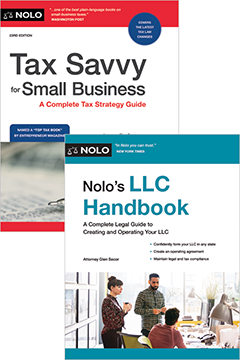A corporation consists of shareholders, a board of directors, and officers.
When you form a corporation, you must organize the owners and managers—give them responsibilities and rights—according to the rules laid out in your state's corporation laws. Within a corporate structure, shareholders are the owners of the company, while the board of directors and officers manage the business, often with the help of employees.
It is important to understand the rights and responsibilities of each position, and conduct the business in keeping with the rules, as failing to do so could put your liability protection at risk (meaning the owners could be personally responsible for the debts of the business). Running the business consistent with corporate structure isn't just about protecting your personal assets—from a practical point of view, it will allow your business to run smoothly and efficiently.
The Roles in a Corporation
In order to understand the structure of a corporation, you should familiarize yourself with the different corporate roles and how they work together. As explained in more detail below, the owners and managers of a corporation fall into one of the following categories:
- Shareholders: The shareholders are the owners of the business.
- Board of directors: The board is responsible for the overall management of the corporation.
- Officers: Officers handle the day-to-day affairs of the business.
- Employees: All others who work for the business are employees. Corporations are not required to have employees (though they must have shareholders, officers, and directors).
The same person can serve in more than one capacity, but only if the laws of the state permit it (as explored below). For example, if permitted in your state, you could be a shareholder, the secretary (an officer position), and a board member.
Shareholders
The shareholders have invested money into the business and are owners of the company. Ownership interests are represented by "shares" of stock. A corporation may have a limited number of private investors, or a corporation can "go public," meaning the general public can invest in the company in exchange for stock.
Shareholders participate in the corporation by voting on major corporate decisions, such as adding or removing board members, dissolving the corporation, or changing the bylaws. Unless shareholders also serve in another position, they do not take part in other business decisions or management of the corporation.
The Board of Directors
The shareholders elect a board of directors, which is a group of people responsible for oversight and financial decision-making for the corporation. For example, the board decides when to pay dividends to the shareholders, authorize stock issuance, and whether to merge with another corporation. Board members owe a duty to the shareholders to place the interests of the business above their own, and to keep the corporation running efficiently.
Check with the laws of your state to learn the requirements for your board. Some states allow corporations to only have one director, while others require three or more. Some states impose other restrictions, such as requiring all board members to be a resident of the state, over 18 years old, or both.
Corporate Officers and Employees
While the board is responsible for the overall direction of the company, the board appoints officers to handle the day-to-day operations. Officers have the option to hire employees to help with managing and running the business. Common officer positions include:
- President or Chief Executive Officer (CEO): The CEO reports directly to the board and is the highest manager of the corporation.
- Vice President or Chief Operations Officer (COO): The COO reports to the CEO and is responsible for daily operations, such as marketing and personnel.
- Treasurer or Chief Financial Officer (CFO): The CFO monitors and analyzes financial data for the corporation.
- Secretary: The secretary is responsible for maintaining corporate records and takes minutes at shareholder meetings.
Again, check with your state's laws to determine the officer requirements. Many states require a CEO, while a COO, CFO, or Secretary might be optional. Some states do not allow the same person to serve in more than one officer position, while other states allow overlap.
The Role of Bylaws and Your Corporate Structure
Bylaws are the internal rules for how you will run and manage your organization. They include provisions such as the minimum number of board members, how often the board meets, and the process for appointing officers. Bylaws must comply with the state's minimum requirements, such as the number of directors and the frequency of meetings. If you do not have bylaws, or they are silent on an issue, your corporation will follow your state's minimum requirements. To learn more about corporate bylaws, see our article Drafting Corporate Bylaws.
Consequences of Failing to Follow Corporate Structure
One of the main reasons to form a corporation is to protect the directors' and shareholders' personal assets from the liabilities and debts of the business. However, if a judge finds that a corporation is not following corporate formalities, such as failing to designate a board of directors or hold meetings, the court can "pierce the corporate veil" to hold owners responsible for business debts.



